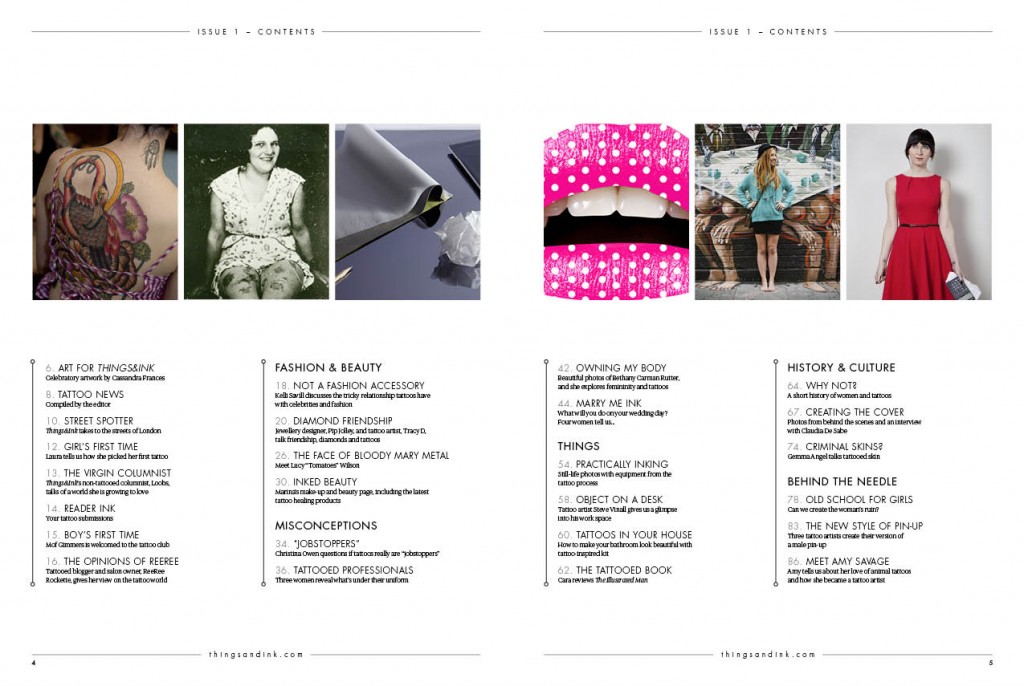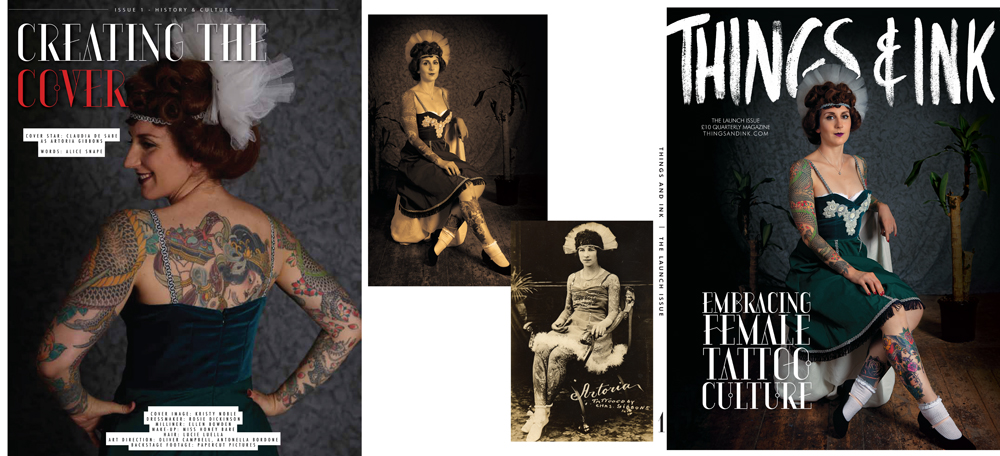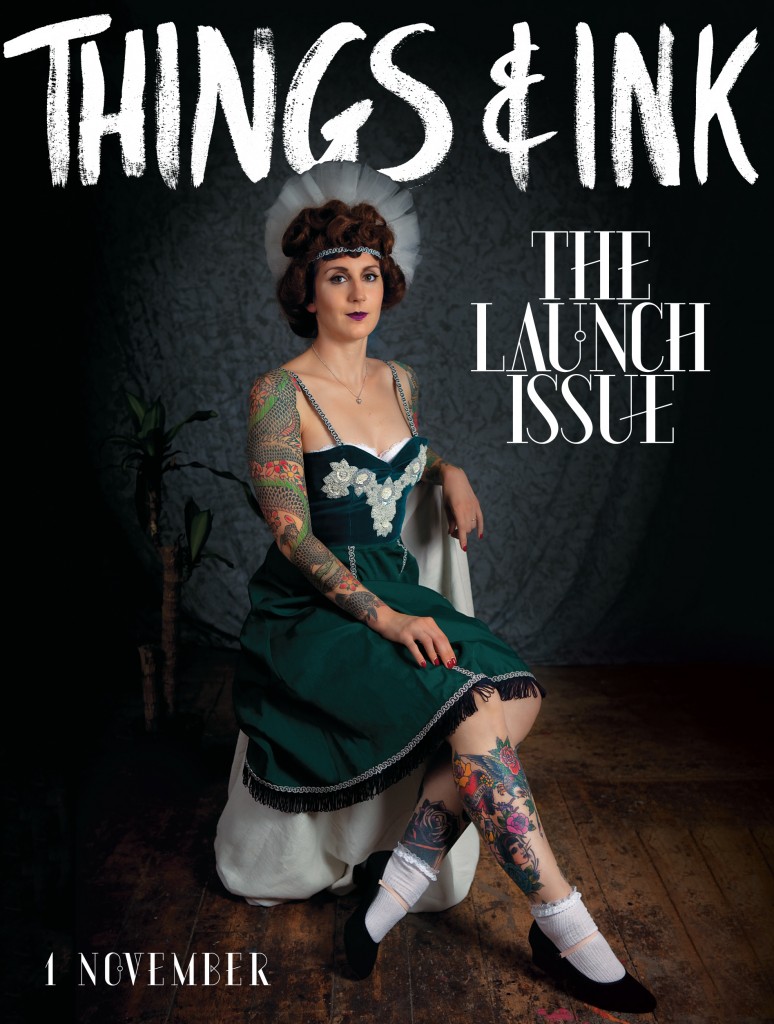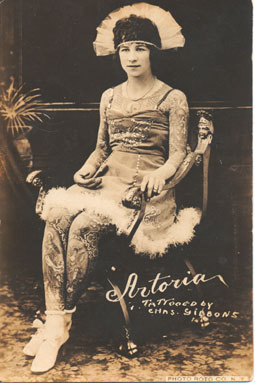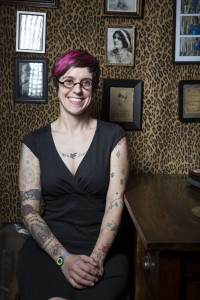
An edited version of an article by Amelia Klem Osterud – first published in The Launch Issue of Things&Ink magazine.
When was the first woman tattooed? Who was she? Who was the first woman tattoo artist? These are questions that we’ll never know the answer to, because, despite the idea that women and tattoos somehow are a modern phenomenon, women have been getting tattooed for as long as the idea to put ink and needle to skin has been around.
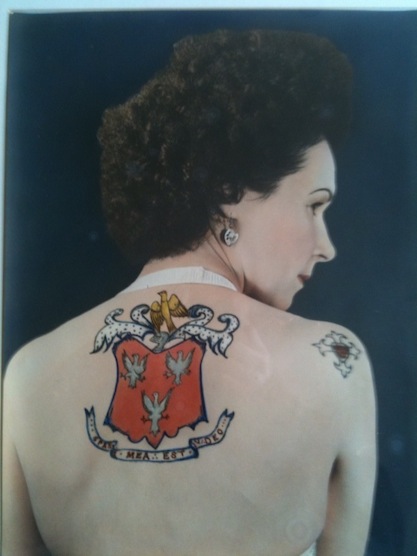
Sluts and sailors
Over the last 100 years, a stigma has developed against tattooed women – you know the misconceptions, women with tattoos are sluts, they’re “bad girls,” just as false as the myth that only sailors and criminals get tattoos. Nothing can be further from the truth. Look around you, lots of women have tattoos. Maybe your mum has a tattoo, maybe your grandmother or your colleague. Probably your best friend has one, maybe two. Of course, tattoos have risen in popularity over the past several decades among both genders, but a look at history tells us that women have been getting tattooed longer than that.
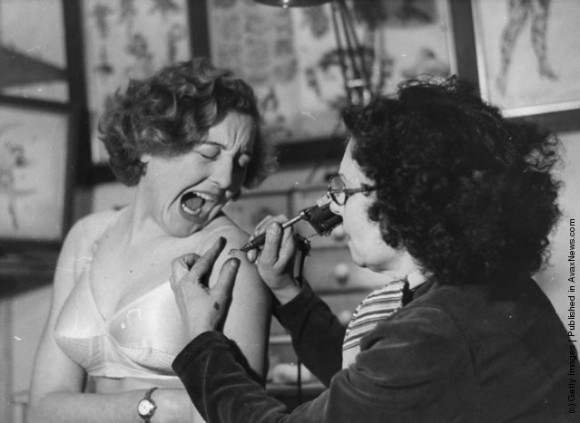
The Tattoo trick
A 2007 Smithsonian.com article includes photographs of a female tattooed mummy from the Pre-Inca Chiribaya culture and small female figurines with tattoos. Tattoo historians have found evidence of women with tattoos throughout the more recent past, including records of encounters with early tribal European women (Picts, Celts) and of course, South Seas Island women of various tribes. Native American women tattooed and were tattooed extensively, and there is conjecture that, despite the lack of written evidence, medieval European women bore tattoos like their male counterparts.
Heavily-tattooed performing women awed audiences from sideshow and dime museum stages. Even British and American Victorian women decorated themselves with tattoos – newspapers from the 1870s forward reported on the “fad” of tattooing among upper crust women of the time. One of the earliest mentions of ladies and tattoos from that time period was in the New York tabloid National Police Gazette. This sensational paper reported on a female tattooist (neither men nor women were routinely called “tattoo artists” then) in 1879 in an article entitled ‘The Tattoo Trick.’ The reporter had located an unnamed woman “found in an unpretentious but neat house in a respectable locality” whose profession was to tattoo crosses, serpents, monograms, and circles on the limbs of the demi-monde of Philadelphia. She “proved to be a pleasant-faced lady, attired becomingly…” with fingers stained “black with India ink.” She said that business was good, and her clients were primarily women, who she tattooed in their homes.
The lady tattooist then answered age-old questions – whether or not it hurt (“to some it is, to others not”) and what it cost (between $5-$25, though possibly as high as $50 for very elaborate designs.) It’s very similar to articles from The New York Times with tattooist Martin Hildebrandt from 1876 and 1882, with the main difference being that the tattooist is female. Hildebrandt comments in the 1882 New York Times article that his “patrons are primarily ladies” and “they pay well for… inscriptions” like birds, flowers, and mottoes. Clearly, women in Victorian New York were interested in getting tattooed and being tattooists, despite the stereotype.
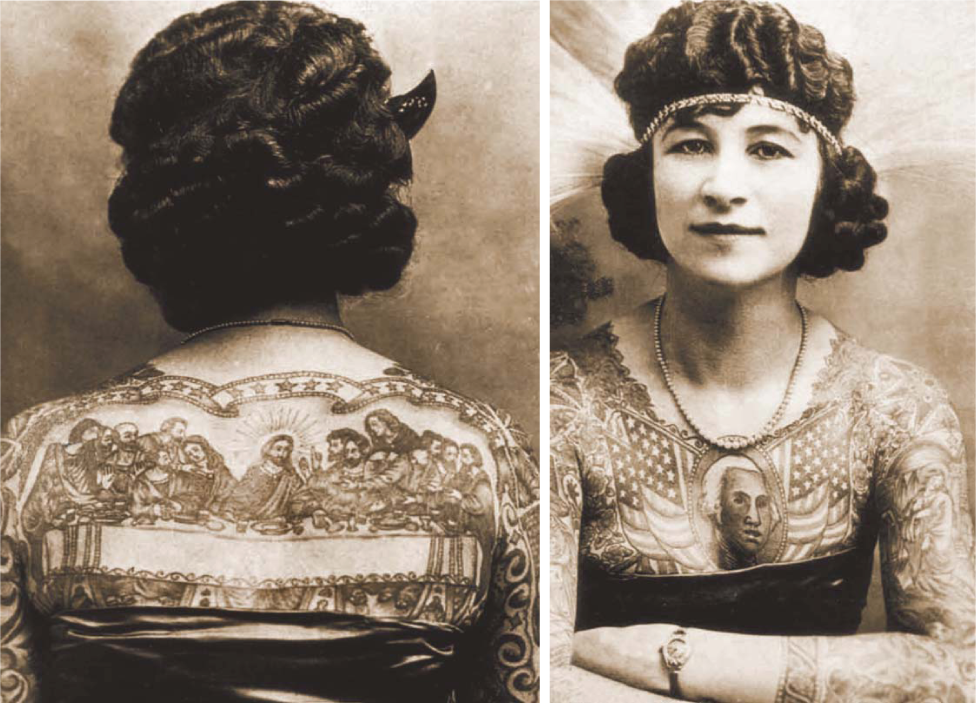
The negative response
In contrast, Albert Parry’s 1933 book Tattoo: Secrets of the Strange Art as Practiced by the Nativesof the United States is part of the reason that, despite many women having private tattoos, popular opinion about women with tattoos was overwhelmingly negative. Parry viewed everything about tattooing as overtly sexual. “The very process of tattooing is sexual. There are the long, sharp needles. There is the liquid poured into the pricked skin. There are the two participants of the act, one active, one passive. There is the curious marriage between pleasure and pain.”
Most of Parry’s writing on tattoos is focused on men and their sexual desires. The very little in Tattoo: Secrets of the Strange Art that discusses women and tattooing is overwhelmingly chauvinistic and negative. Women, according to Parry, most often get the names of their lovers tattooed on their breasts because tattooing is such a sexual act. The women that grace the pages of Parry’s book are simultaneously ashamed of their tattoos and exhibitionist bad girls who cheat on their husbands who are “asking for it” when they are treated badly.
Unfortunately, Tattoo, along with several books like it, made an impression on the readers of the mid-century. The image of a tattooed woman as a bad girl lingered, like the books and articles that reprinted stigma and innuendo. Only now, with more and more women both getting tattoos, and getting publicly visible tattoos, are things starting to change. Certainly, there are many who don’t understand the urge to decorate one’s body, and are afraid of something they don’t understand. But as women start to take control over their public images and public bodies, tattoos are going to only become more visible and accepted. Someday soon, the question won’t automatically be “Why would you do that?” but “Why not?” ❦
All issues of Things&Ink magazine can be purchased from, thingsandink.com/buy – we are currently working on issue 7, due out in May 2014.

